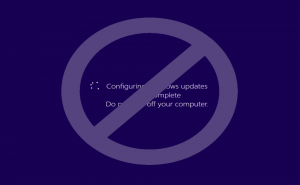 How to disable ads in Windows 10
How to disable ads in Windows 10
Windows 10 comes with several new and useful features, but some of them might not be as helpful as you might think. I'm talking about "Action Center notifications" and "Windows Spotlight". While these features can be useful, they can also force you to view annoying ads. If you are like me and want to disable these notifications, keep reading this guide to find out how to do that.
Disable Microsoft Office ads
These ads usually appear on the bottom-right part of your screen and constantly remind you to buy or upgrade your Microsoft Office suite to the latest version. While this might interest you, it can also become quite annoying when dealing with other tasks. Luckily, there is a simple way to disable them: all you need to do is identify what causes them to appear.
Get Office Notification
In case you haven't already stumbled upon it, the tool that causes these notifications to constantly appear is called "Get Office app", and it comes bundled with your Windows 10. You can always go to the "All apps" section from the Start Menu, find the program, right-click on it and uninstall it, or you can choose to simply disable the notifications.
Uninstall Get Office App
To disable the notifications from the Get Office app, all you have to do is go to the "Settings" menu, click on the "System" icon, select the "Notifications & actions" tab and simply use the "Get Office app" slider to turn it off.
Diable Get Office app Notifications
Disable lock screen ads
Application-related ads are not the only notifications that Windows 10 might force you to view. There are the ones displayed as the background image of your computer's login screen, like the Tomb Raider ad in the image below. These ads are caused by a "helpful" Windows 10 feature called "Windows Spotlight". Luckily, same as when dealing with the above mentioned ads, disabling them is easy.
Lock Screen Ad
In order to remove these ads, you will have to access your "Settings" menu and click on the "Personalization" icon. Once there, select the "Lock Screen" tab and switch your background from "Windows Spotlight" to either "Picture" - if you want a specific image to be shown, or "Slideshow" - if you want to view a series of photos as backgrounds on your login screen.
Change Background Type
One more thing that you will need to do if you don't want to get any ads after changing your background type is ticking off the "Get fun facts, tips, tricks and more on your lock screen" option.
Tick Off Option
There is also a way to keep these ads, that is, if they don't bother you, and make them more "personalized'. Simply click on the icon located in the top-right part of your lock screen and choose one of the two available options to tell Microsoft what types of ads you like and which ones to avoid in the future. This applies to both ads and random pictures that Windows Spotlight provides you with.
Personalized Content
Conclusion
As you can see, turning off ads provided to you by Windows 10 is quite a simple process. Keep in mind that this guide refers to the ads and notifications that Windows 10 provides you with. There are a lot of other types of ads, like the famous browser-related ads, but disabling them is a topic for another time.
If you have any questions of comments, feel free to leave me a message in the section below.






I'm talking about "Action Center notifications" and "Windows Spotlight". While these features can be useful, they can also force you to view annoying ads. If you are like me and want to disable these notifications, keep reading this guide to find out how to do that.
Can't do it on my version of Windows 10. No get office.